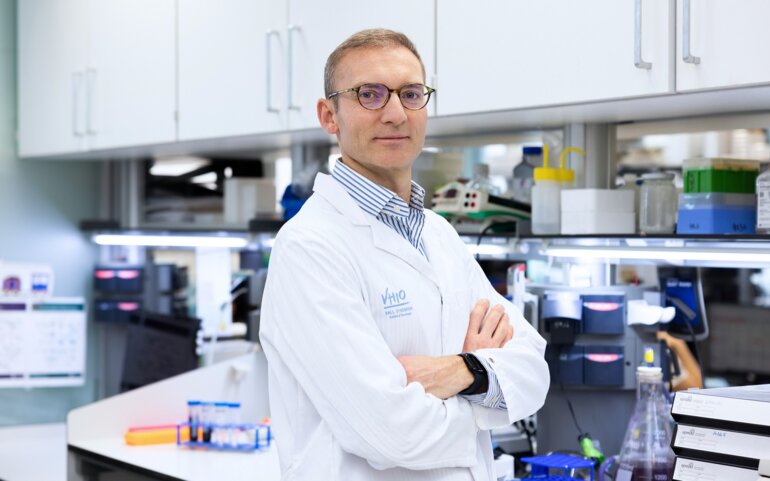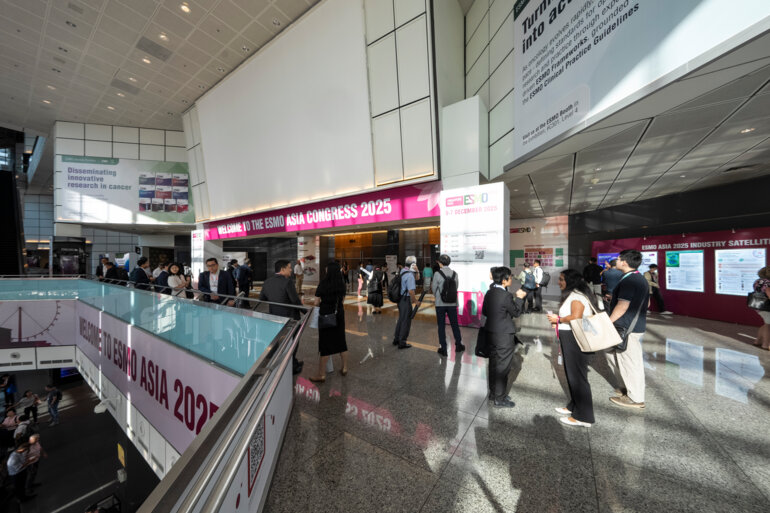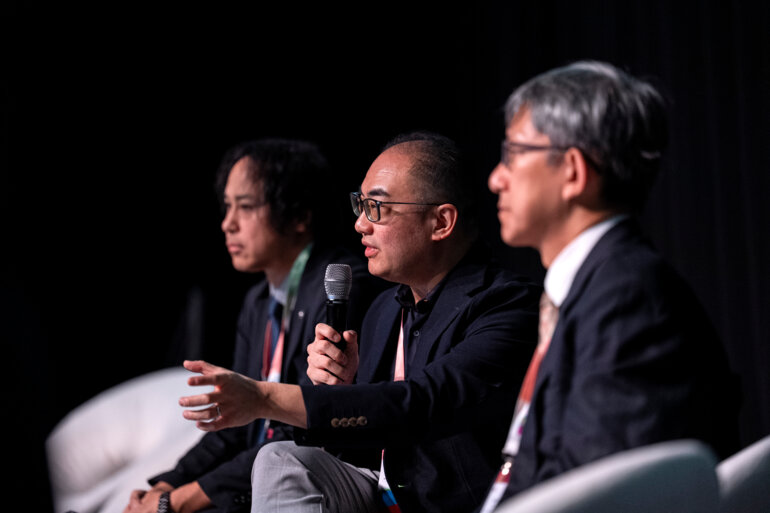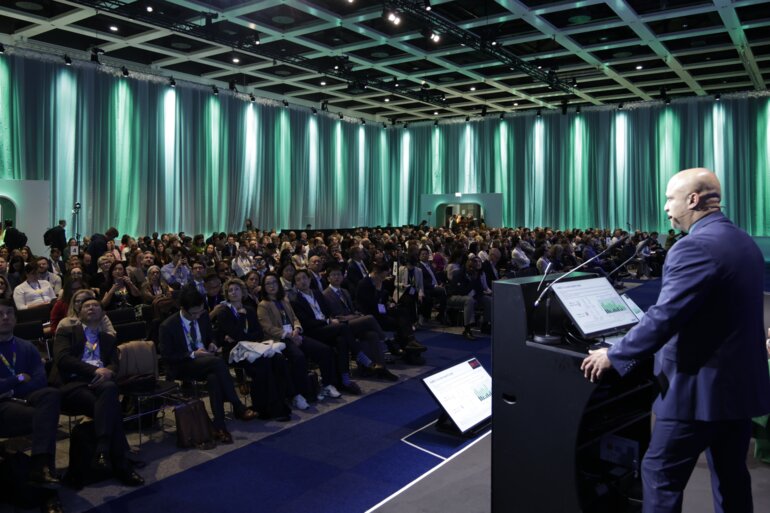ESMO is at the forefront of digital oncology, with some initiatives that support oncologists navigating the emerging opportunities in the field of real-world data research
While real-world data (RWD) generating real-world evidence (RWE) are increasingly becoming a component of oncology research and of regulatory approval processes of new anticancer treatments (Oncologist. 2020 May; 25(5): e746–e752), lack of understanding and trust in observational studies persists among oncology professionals (ESMO Open. 2023 Apr;8(2):100878), thus undermining progress in the field. Early steps towards a more systematic approach to real-world research have been recently undertaken by ESMO, including the development of the ESMO Guidance for Reporting Oncology real-World evidence (GROW) and the launch of ESMO Real World Data and Digital Oncology, a peer-reviewed open access journal dedicated to high-quality data science and digital transformation of oncology. According to the journal’s Editor-in-Chief Dr Rodrigo Dienstmann, from Oncoclínicas Group, São Paulo, Brazil, and Vall d’Hebron Institute of Oncology, Barcelona, Spain, giving visibility to what is still considered a niche topic will help oncologists better navigate digital oncology and make wiser use of big data from the real world.
What does being appointed Editor-in-Chief of the ESMO Real World Data and Digital Oncology journal mean to you from a career perspective?
This is for me a recognition of my transversal training and a long-standing commitment to building the oncology data ecosystem. RWD and digital health are niche topics, but they show how oncology is already being transformed by technology. Also, they are interrelated with the physician’s changing perspective on the evidence coming from outside traditional research. Healthcare infrastructure can help oncologists provide better care.
It is increasingly acknowledged that there are some questions that traditional clinical trials will never be able to answer, and only RWD will provide the missing information as it comes from the “perfect/real” patient rather than a selected and "super fit” subgroup of patients.
Now, we are just learning how to make the data from the real world trustable, so that they may guide the decision-making process in clinics in the future. This is a new era for oncology research, with its own challenges and biases, and I am very excited about this role, because I identify myself with the hope and the pain that oncologists feel by facing digital transformation in medical records these days. With this new ESMO journal, I am in the position of helping set the tone of how RWD/RWE should be perceived by the oncology community, i.e., as a common reality, rather than something fictional or for mathematicians and statisticians only. For this, the journal is very clinically oriented.
How has the perception of RWE changed among the oncology community in recent years?
Nowadays there is a lot of attention on real-world research, and both the Food and Drug Administration and the European Medicines Agency have recently developed frameworks for the use of RWE in regulatory decision-making process. This may have encouraged institutions, researchers and the industry to invest more in RWE studies. However, some colleagues still understand RWD as descriptive analyses from retrospective cohorts collected in spreadsheets, and they fail to see the full picture of digital platforms feeding data repositories that undergo cleaning, standardisation, qualification and integration, such as genomic testing and pathology.
Of course, the process of digitalisation requires extra efforts and data curation, and many oncologists do not feel confident in interpreting studies that apply novel algorithms and models for decision-making. It is quite different from making treatment recommendations based on randomised clinical trial data (with hazard ratios for survival outcomes, for example).
Having a “dedicated place” for real-world research such as our new peer-reviewed, open access journal will certainly improve the communication around RWD quality and build confidence in the community to make wise use of evidence coming from non-traditional sources by explicating potential biases and errors, and without overselling digital technology or artificial intelligence solutions. With the journal, we call the global academic audience to take action around the emerging opportunities from the field, scaling up real-world cancer registries with robust digital infrastructures. The industry was pushed by a more encouraging regulatory environment for application of RWD as complementary evidence in the filing of new drugs or new indications, and commercial entities have moved very fast. Academic-industry collaborations are critical to advance the field.
Recently, ESMO has also developed some recommendations for reporting real-world evidence studies in oncology. How would they contribute to consolidate real-world research?
The ESMO Guidance for Reporting Oncology real-World evidence (GROW) represents a strategic kick-off project of the recently settled ESMO Real World Data and Digital Health Working Group. The recommendations address a concrete need for specific guidance for RWE studies in oncology, a field with its own particularities which have not been covered in other pre-existing guidelines, such as specific variables, biomarkers, therapies, or outcomes. In addition, modern technologies such as machine learning and deep learning have been recently introduced for different stages of the data analysis process in RWE studies. There are 35 recommendations for RWE publications, and a list of core definitions and variables which may be useful to anyone who is willing to explore this area of research.
Going beyond the working group’s original purpose, I believe in the value of the ESMO-GROW as a way to advocate for real-world research too. We are urging the community to build infrastructures to collect high quality data and improve data analysis, with a direct impact on the reporting side. The ESMO recommendations are hopefully going to reach leaders in oncology and contaminate the way institutions are looking at RWD, a first step in the right direction for this type of research. The ESMO Real World Data and Digital Oncology journal will promote the adoption of ESMO GROW and release a checklist to ensure clear disclosure of what was conducted in the RWD study published.
What are still the main challenges of conducting RWE studies?
Having in-house technical expertise is definitely a major limitation for research institutes, which have to work side by side with IT companies. This raises some issues on data access and sharing to be compliant with the General Data Protection Regulation of the European Union. For example, issues around informed consent for secondary data use signed by patients enrolled in a RWD study.
Digital oncology applications, such as mobile apps for patients integrated in the continuum of care, are still in their early days, and tailored regulations are yet to be developed. So, for now, research is lagging behind, and only small-scale studies have been conducted by institutes. In the future, hopefully, every hospital will be a research centre, and even if there is not a specific consent form tailored to the research carried out, we will have the capacity to get and analyse the data needed in a secure way, respecting privacy and patients’ rights. But we are not there yet.
Many things are now in the pipeline in terms of developing a regulatory framework, but this should not stop us moving the field forward. With our journal, we will support policy makers and regulators in the journey for building a more favorable ecosystem toward the use of RWD and digital devices in the clinical setting.
What would be the impact of increasing high quality RWE research on the regulatory approval process of anticancer medicines?
Recent analysis indicates that RWD study for novel anticancer therapies are generally of insufficient quality to inform clinical practice (Eur J Cancer. 2021;155:136–144). However, most of the documents currently prepared and submitted for new agents or indications approval include RWD as complementary data, and in very few cases of label expansion, RWE was accepted as exclusive evidence, such as palbociclib in metastatic male breast cancer (Clin Pharmacol Ther. 2022 Jan;111(1):302-309). These are positive signals from the health authorities, and they further reinforce a trend toward a widespread use of datasets from the real world in oncology.
As of now, we are using fit-for-purpose RWD as a control arm in non-randomised clinical trials, trying to do a “virtual randomisation”. We will definitely skip phase IV clinical trials, because RWD can be used for assessing safety and tolerability in a broader population. Many post-marketing commitments and requirements are RWD cohorts. Although we are far away from the ideal scenario of diverse and high-quality RWD, the oncology community should start to recognise that RWE is already a reality that has the potential to impact on our clinical decision-making. ESMO is at the forefront of the digital oncology revolution – we are just opening a Pandora box.
AI & Digital Oncology: Resources in one place
Looking for further insights into how artificial intelligence and digital tools are impacting oncology? The ESMO AI & Digital Oncology Hub brings together expert perspectives, research updates, and thought leadership from across oncology.
It is a space where you can stay informed, discover resources, and follow the conversation on digital innovation in cancer research and treatment.
To further explore the transformative potential of AI in oncology, the very first ESMO AI and Digital Oncology Congress 2025, taking place from 12 to 14 November, will provide a dedicated platform focused on the latest advances in AI and digital technologies in cancer care.







